Cards In This Set
| Front | Back |
|
Identify |
The Narmer Palette, Egypt,. Early Dynastic period, 3000-2600 BCE. Shows a symbolic union of the upper and lower egypt. slaying of enemy seen as sacred. It was a palette likely used in ceremonial aspects for eye makeup. Sandal holder indicates that he is consecrated ground. Narmer shown crushing enemies. Back: bull symbolizes narmer's power, two row's of decapitated enemies show his success. (wears white crown of upper egypt on front and crown of lower egypt on back). Front: god Horus as falcon hold enemies head to show the divinity of Narmer's rule. Remeber important people composite pose!
|
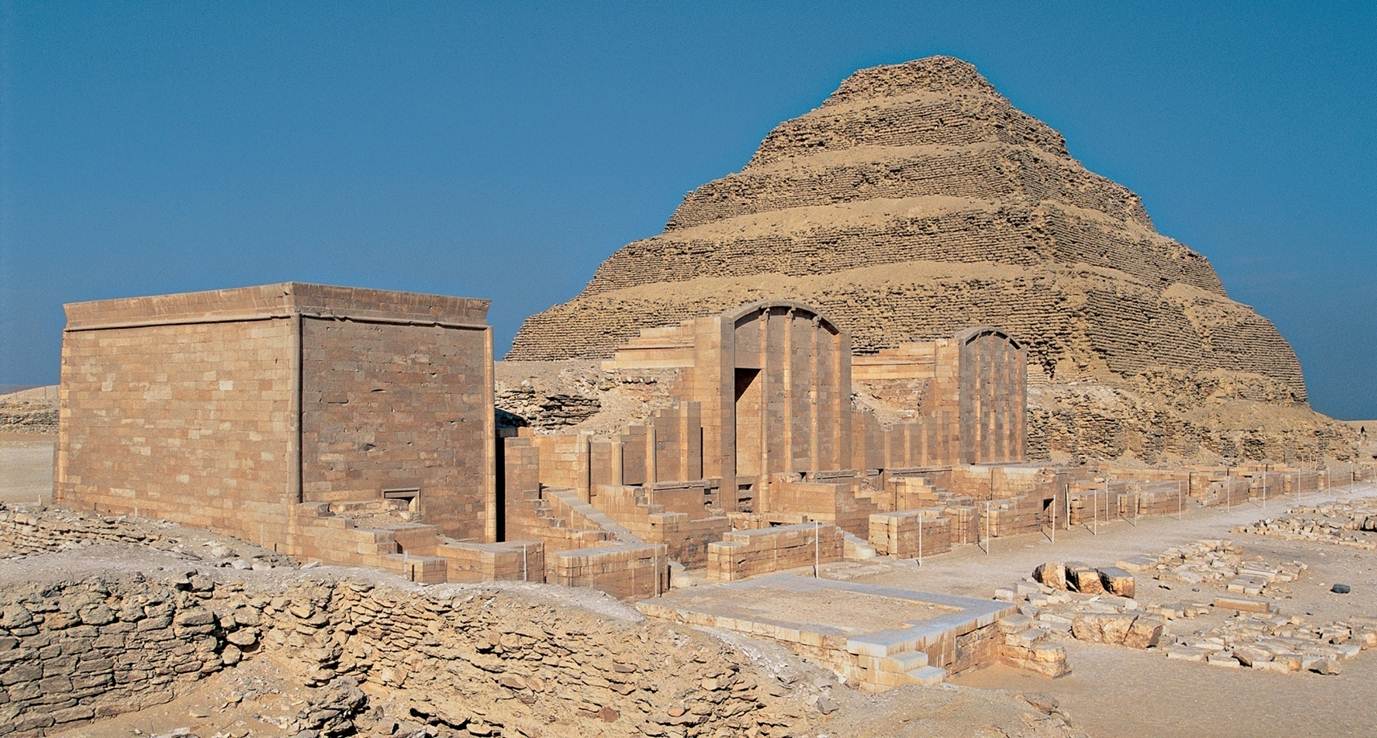 Identify |
Step
Pyramid of King Djoser ; Egypt, Early Dynastic, c.
3000-2600 BCE, Saqqara, EgyptFirst step of transformation from mastaba to pyramids--beginning of long funerary tradition that gave rise to much art. Ajacent funerary temple for mummification and funeral rites and continuing worship of dead king.debris filled buildings to east, that spririt could livein, ka statues could watch funerl rites fthrough peep holes.
|
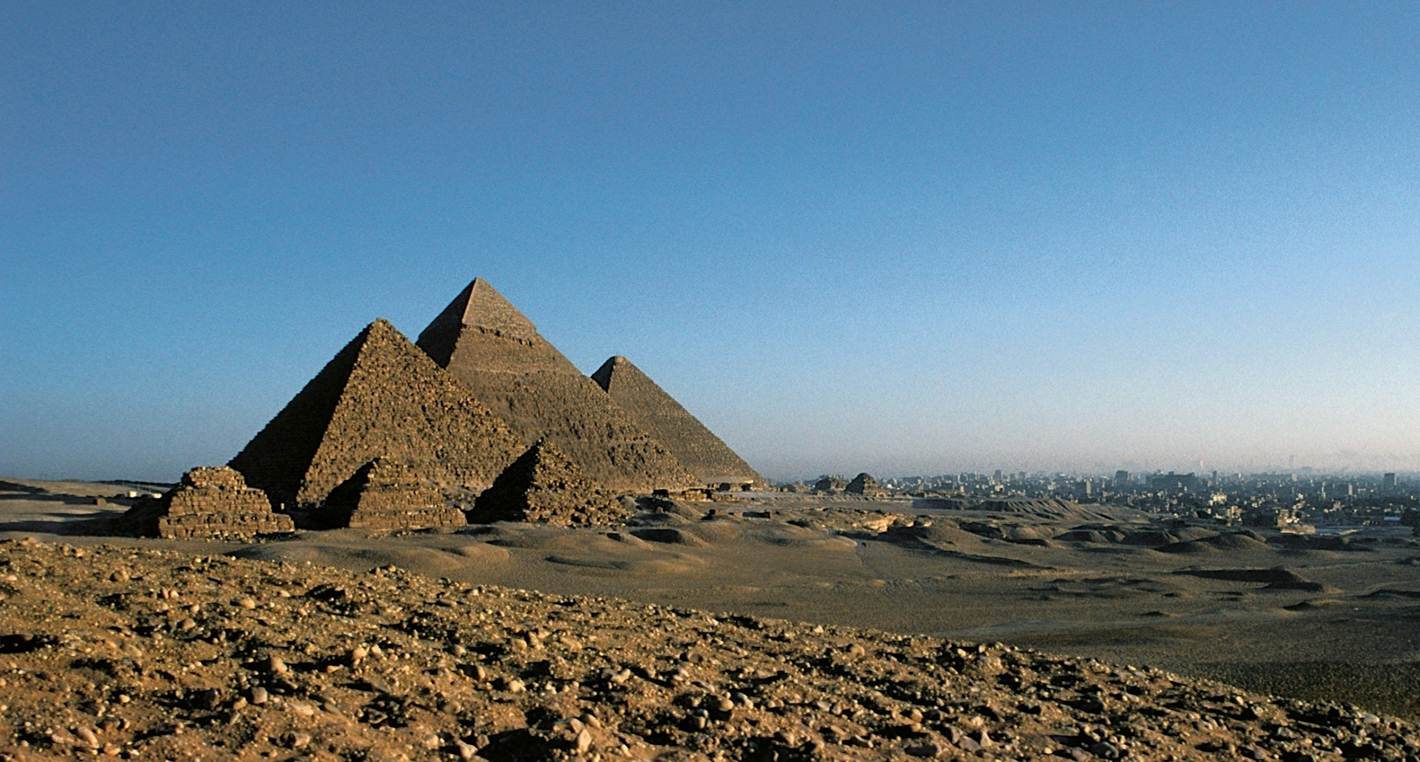 Identify |
Great
Pyramids; Egypt, Old Kingdom, c. 2600-2200 BCE, Giza Three
pyramids for three different deceased Kings followed sun's east,west, path body, embalmed, sent across nile from palace and placed in chape, family presented offerings and priests performed rites, rites performed in perpetuity. shows ingenious calculations and constructions, pinnacle of egyptian achivements. |
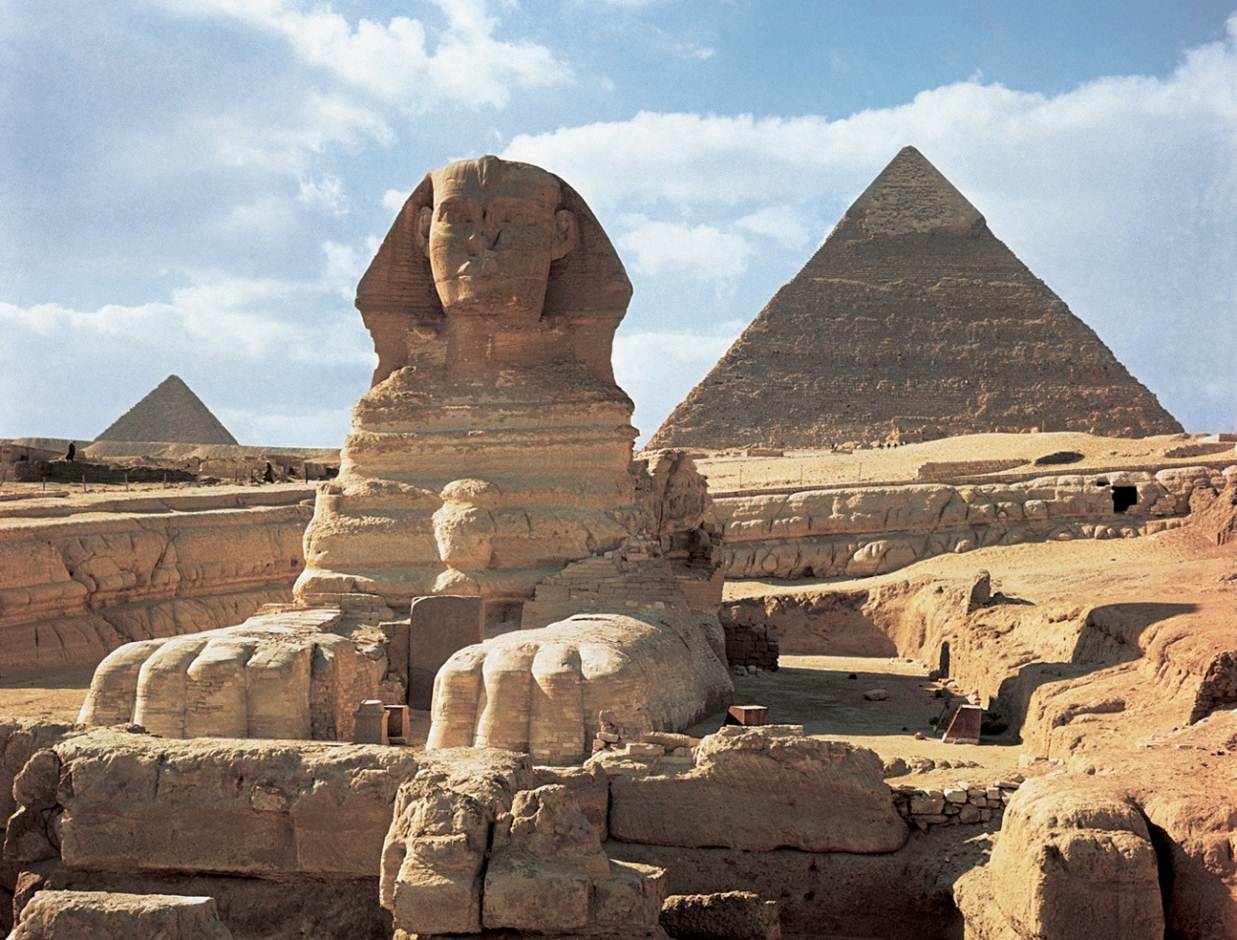 Identify |
Great Sphinx
Egypt,
Old Kingdom, 2600-2200 BCE, Giza
|
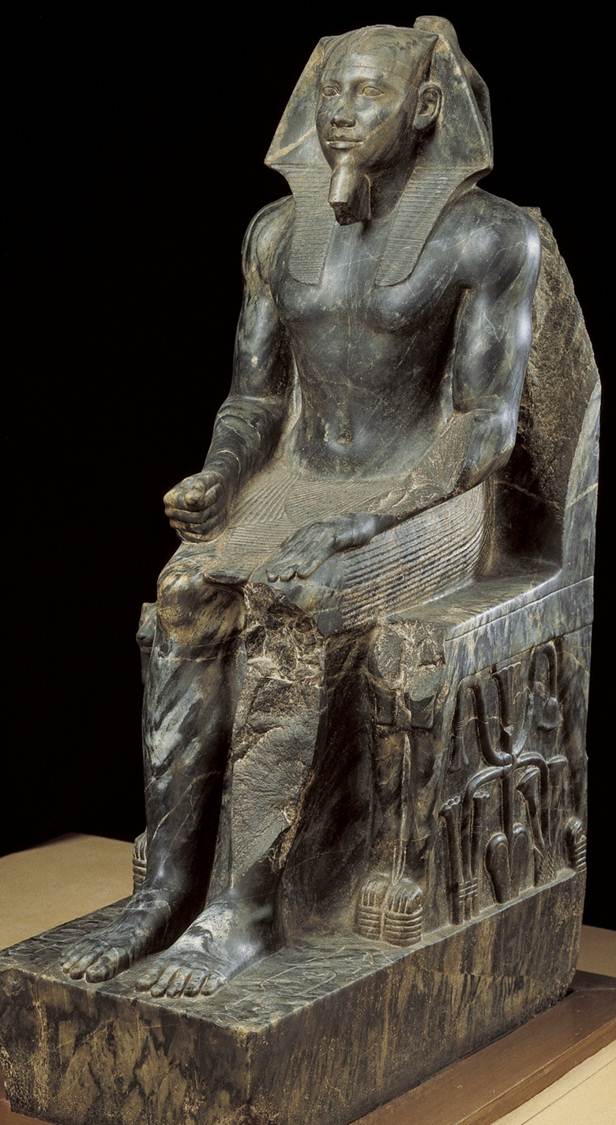 Identify |
3-8
King Khafre; Egypt, Old Kingdom, c.
2600-2200 BCEKing Khafre, made from incredibly hard stonr, figure idealized, strong, youthful, and stoic...male power, athletic., falcon god horus sits on back to protect king. two lions--symbol of regal authority, create legs. Khafre wears false beard (symbol of royal authority), headdress and traditional royal garb. Divinity, strength, power permanence (ka).
|
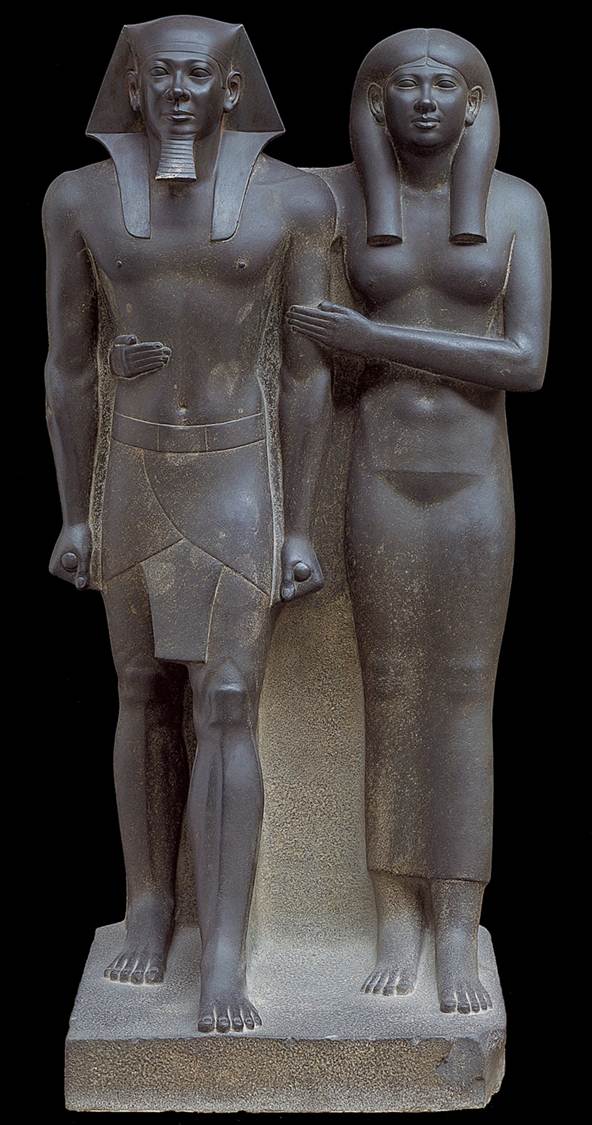 Identify |
Menkaure and Queen; Egypt, Old Kingdom,
2600-2200 BCE tight muscularity of King and Queen. Depicted in conventional balanced pose of king and queen, one foot striding foward (incomplete) depict basically same things as king khafre.
|
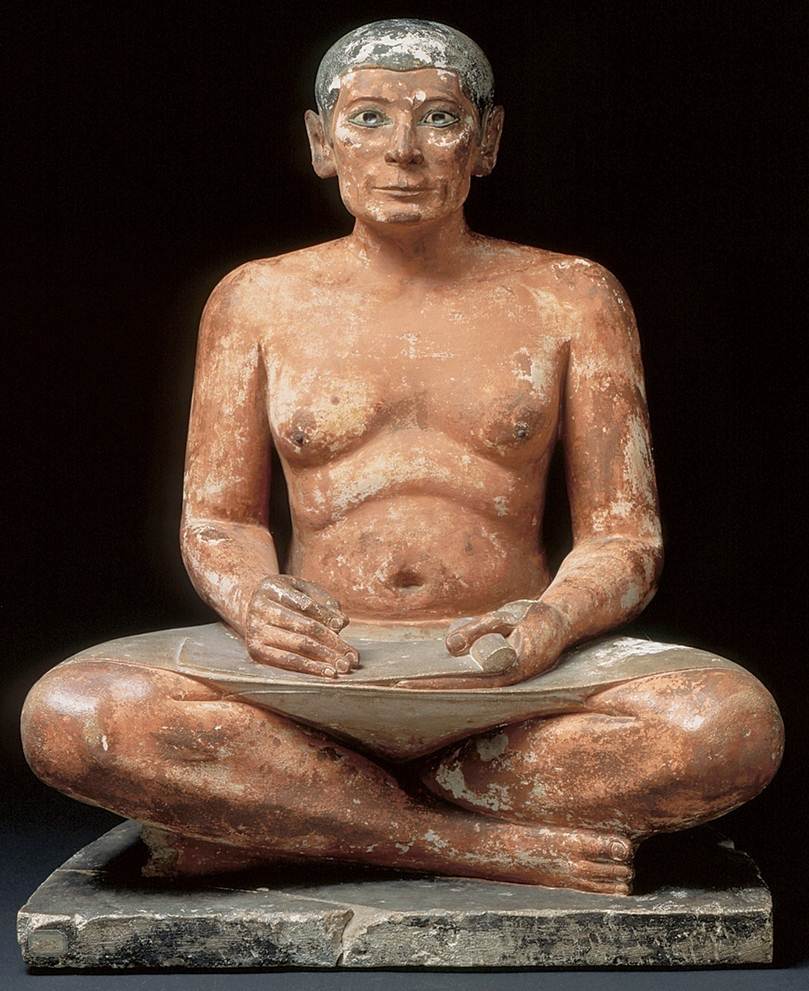 Identify |
Seated
Scribe; Egypt, Old Kingdom c. 2600-2200 BCE
Non-royalty depicted more nationalistically, kind of plump, in contrast to idealized athleticism of kings, happy smile, shows human emotion other than dignity, stoicism and power, evidently shows the power structure of egypt--king's divinity. living intelligent, evidently shows him how he is (slightly flabby becaues of sedentary vocation). |
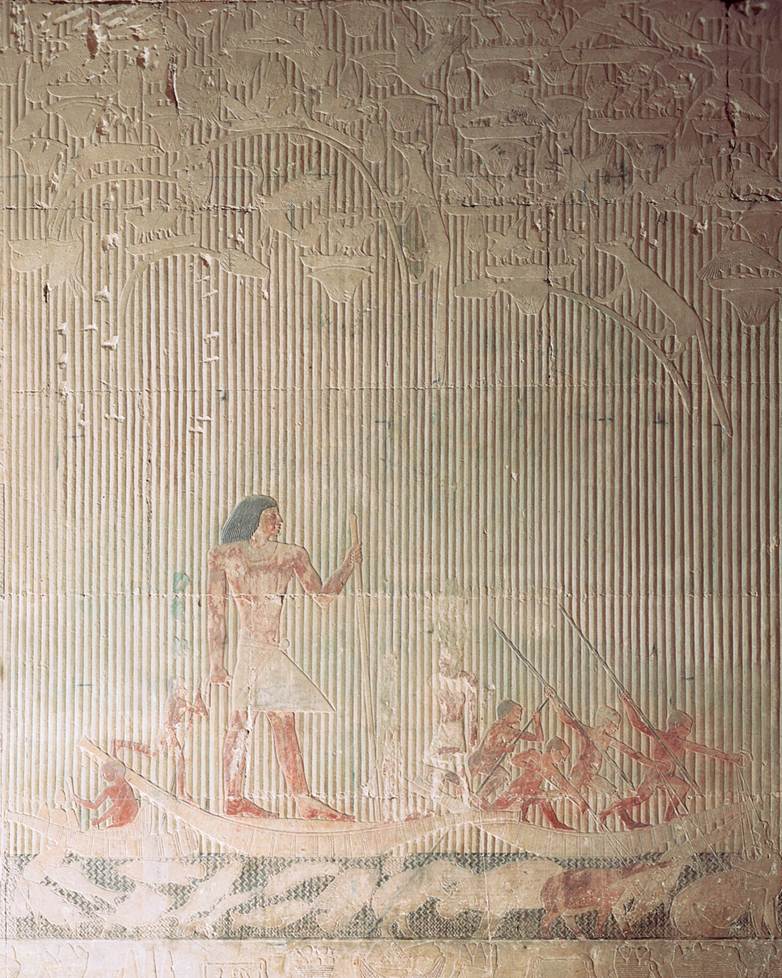 Identify |
Ti
Watching Hippopotamus Hunt, Tomb of Ti, Egyptian Old Kingdom,
2600-2200 BCE
SaqqaraShows hierarchic scale, Ti tallest depicted in composite, servants, second most important depicted more lifelike and active, the hippos and foxes are the most life-like and active, climbing amongst trees. Ti is not active and shows a disctintive royal air. Depicted in composite distinguish his "greatness). animals and water shown in profile for easy identification...egyptians indiffernt to perspective. hunting hippos--show's ti's position ias not quite royalty but a faithful servant of king.
|



